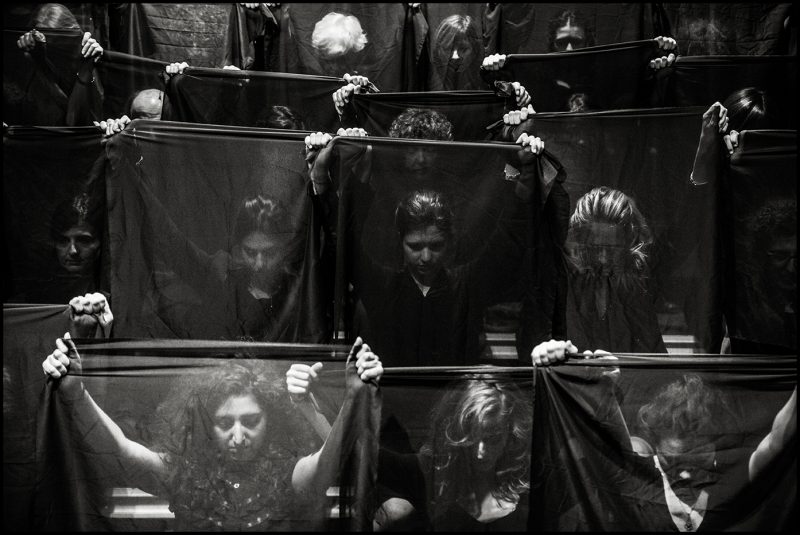Throat
in Three Movements

conceived and directed by Chiara Guidi
in collaboration with Alessandro Scotti
sound design Giuseppe Ielasi
assistant director Chiara Savoia
technique Giovanni Marocco, Eugenio Resta
equipment Carmen Castellucci
constructions makers Gionni Gardini, Vito Matera
organization Elena de Pascale
production Societas
special thanks to Laura Casadei, Roberta Ioli,
Annalisa Sacchi and Cristina Ventrucci
photo Alessandro Scotti
The doula è is the servant girl who listens. This is the first movement.
Cechov’s little mare, the only one who is able to listen to and sympathise with the old sledge-driver Jona Potàpov, one week after his son has died, is the second movement. In the stall with her, the father finds a way to sing his own sorrows.
Ewa is the third movement. A recognition process is underway in Bosnia. Almost thirty thousand people disappeared during the war in the Nineties, and not all of the bodies were found in the mass graves. It was necessary to descend, to raise, to recompose, to recognise and to assign names, in order to give the dead back to their families. And to bury them. This has been Ewa’s job, for many years.
Faced with the tragic force of reality, many questions arise in theatre. What does it bring to light?
How could one answer this question. In Throat, theatre comes into play in senses that are not only aesthetic. It is a question of touching, with the haptic glance of tragedy, the hero’s grief. Of placing oneself alongside those who act and suffer. Of giving them a present, which is the time of theatre, and giving them a voice, the artist’s voice, that binds together listening, pain and a cure in one single body.